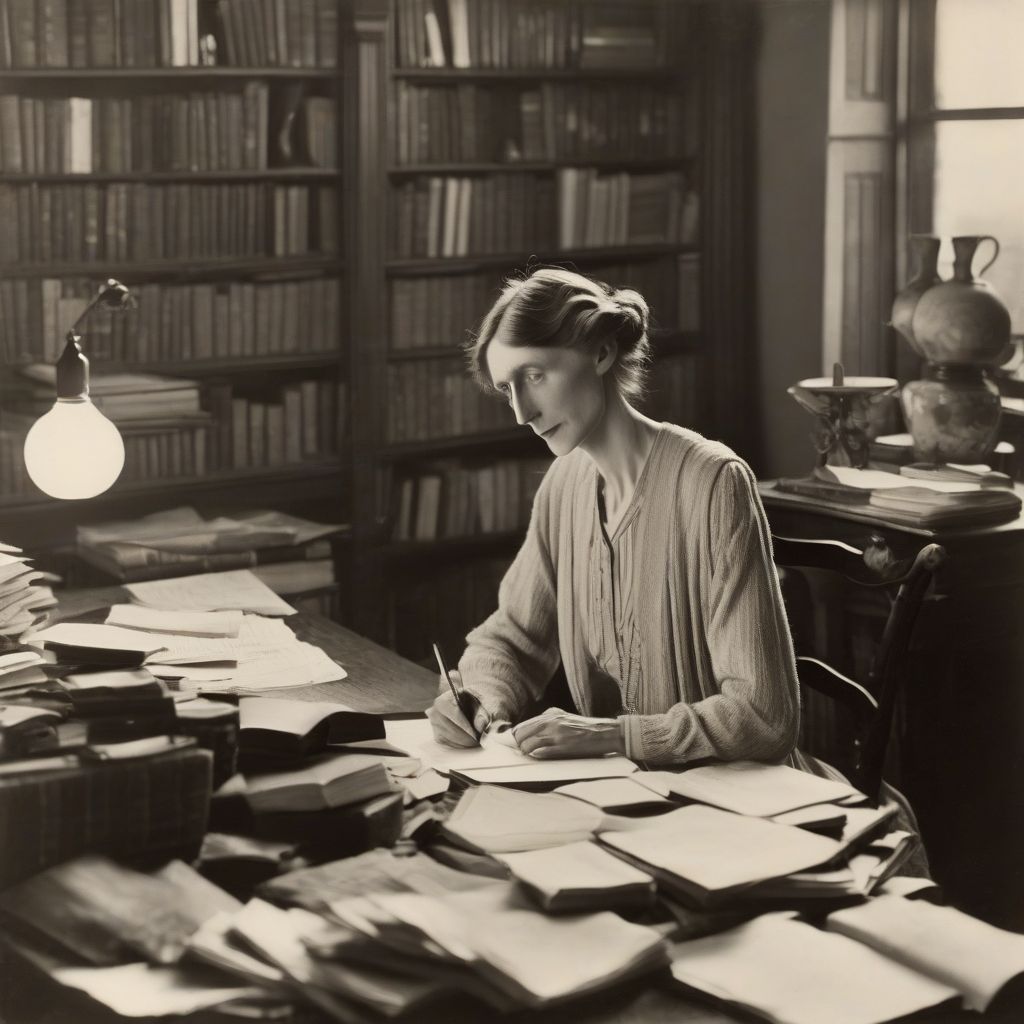Have you ever felt like the traditional way of telling stories just didn’t capture the complexity of human experience? Virginia Woolf felt that way too. This pioneering author dramatically reshaped the landscape of 20th-century literature with her innovative style and groundbreaking techniques, solidifying her place as a central figure in literary modernism. But how exactly did she pioneer this movement? Let’s dive into the world of Woolf and explore her remarkable contributions.
Stream of Consciousness: A Window into the Mind
One of Woolf’s most significant contributions to modernist literature was her masterful use of stream of consciousness. This technique aimed to represent the continuous flow of thoughts and sensations in a character’s mind. Unlike traditional narratives that rely on linear storytelling, Woolf’s stream of consciousness offered a glimpse into the inner workings of her characters’ psyches, capturing their fleeting thoughts, memories, and impressions with startling accuracy. Think of it like reading someone’s unfiltered diary – raw, intimate, and deeply personal.
Mrs. Dalloway: A Day in the Life
Woolf’s Mrs. Dalloway exemplifies this technique beautifully. The novel follows Clarissa Dalloway as she prepares for a party, interweaving her present-day experiences with fragmented memories and the inner thoughts of other characters. This fragmented narrative structure mirrors the fluidity of human consciousness, allowing readers to experience the world through Clarissa’s subjective lens.
Breaking with Tradition: Challenging Narrative Conventions
Woolf didn’t just innovate within existing literary frameworks; she actively challenged and deconstructed them. She moved away from the Victorian emphasis on plot and external action, shifting the focus inwards to the psychological and emotional lives of her characters. This emphasis on interiority was a radical departure from traditional narrative conventions and became a defining characteristic of modernist literature.
To the Lighthouse: Exploring Inner Landscapes
In To the Lighthouse, Woolf further experimented with narrative structure, minimizing external plot and emphasizing the inner lives of the Ramsay family and their guests during a visit to their summer home. The novel’s fragmented timeline and shifting perspectives reflect the subjective nature of memory and the complexities of human relationships.
 Virginia Woolf Writing
Virginia Woolf Writing
The Power of Language: Experimentation and Innovation
Woolf’s innovative use of language further cemented her status as a modernist pioneer. She experimented with poetic prose, employing evocative imagery, symbolism, and lyrical rhythms to create a rich and layered narrative experience. She wasn’t simply telling a story; she was crafting an immersive world that engaged readers on an emotional and intellectual level.
Jacob’s Room: Fragmentary Portraits
Jacob’s Room stands as a testament to Woolf’s experimental approach to language. The novel utilizes fragmented narratives and evocative descriptions to construct a portrait of Jacob Flanders, not through a traditional biographical account, but rather through a collection of impressions, memories, and objects associated with him.
Exploring Feminist Themes: A Voice for Women
Woolf’s writing also delved into complex feminist themes, exploring the social and psychological constraints faced by women in a patriarchal society. She challenged traditional gender roles and highlighted the importance of female autonomy and self-expression. Her insightful portrayals of women’s lives and her advocacy for gender equality resonated deeply with readers and contributed to the growing feminist movement of the time.
A Room of One’s Own: A Feminist Manifesto
In her groundbreaking essay A Room of One’s Own, Woolf argues that women need both financial independence and intellectual freedom to create meaningful art. This work became a cornerstone of feminist thought and continues to inspire generations of writers and thinkers.
The Legacy of Virginia Woolf: Enduring Influence
Virginia Woolf’s impact on literature is undeniable. Her innovative use of stream of consciousness, her experimentation with narrative structure, and her exploration of feminist themes revolutionized modernist literature and continue to influence writers today. She challenged conventional storytelling, opened up new possibilities for literary expression, and gave voice to the complexities of human experience in ways that few authors before her had dared to explore. Her works remain essential reading for anyone seeking to understand the evolution of the novel and the power of language to shape our understanding of the world.
Conclusion
Virginia Woolf’s pioneering work marked a turning point in literary history. From her masterful use of stream of consciousness to her groundbreaking exploration of feminist themes, Woolf challenged conventions and reshaped the landscape of modernist literature. Her legacy continues to inspire writers and readers alike, reminding us of the power of language to capture the complexities of human experience and to challenge the status quo. What are your thoughts on Woolf’s impact on literature? Share your insights in the comments below, and let’s continue the conversation. Explore further by diving into her novels and essays, and discover the richness of her unique literary voice.



